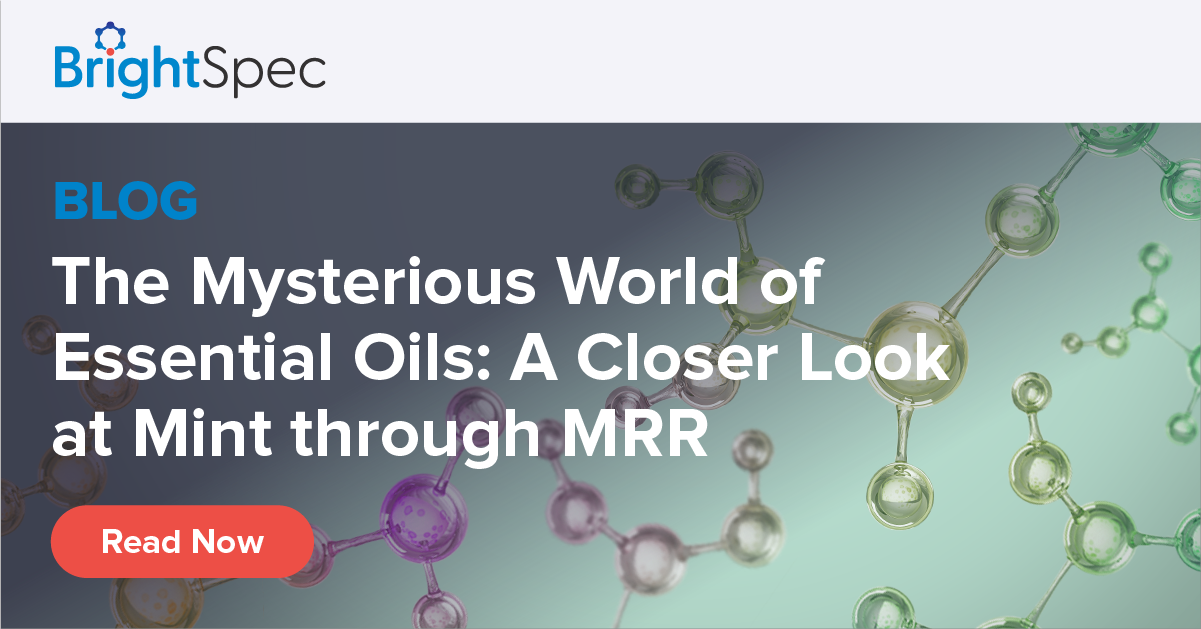The Mysterious World of Essential Oils: A Closer Look at Mint Through MRR

Introduction
The mint family, or Lamiaceae, is vast, encompassing over seven thousand species, each with its own unique aromatic fingerprint. Among these, Agastache urticifolia and Monardella odoratissima, two lesser-known but powerfully fragrant mints from the mountainous Utah terrain, stand out. They’re more than just aromatic plants; their essential oils hold untapped potential for various applications in pharmacology and industry. Yet, until recently, the exact composition of these oils remained a mystery.
While traditional chemical discovery methods, like Gas Chromatography/Mass Spectrometry (GC/MS), have offered partial glimpses, Molecular Rotational Resonance (MRR) spectroscopy has opened a new era of precision. For the first time, we can truly decode the essential oil profiles of these mints, revealing not just what compounds are present but also their precise chiral orientations—key for understanding their potential biological effects.
Unveiling a Mystery of Aromas
Why investigate the essential oil profiles of these particular mint species? For one, these mints are steeped in regional significance and have long histories in traditional uses, yet their chemical makeup has remained largely uncharted. Until now, no one had detailed their chiral profiles—information critical for pharmacology and taxonomy. Essential oils, especially from plants like Agastache and Monardella, are more than just fragrance; they’re a complex mix of chemical compounds that play a role in each plant’s unique identity and ecological interactions.
For researchers, the appeal lies in the possibilities these plants offer: MRR spectroscopy reveals distinct chiral pairs in their oils, compounds which were previously challenging to analyze due to the lack of reference standards. This marks an exciting step forward, making it feasible to distinguish enantiomers of major compounds such as limonene and pulegone, which vary significantly between Agastache and Monardella.
Why MRR Changes Everything
Traditional analytical techniques often fall short when dealing with the complex chiral profiles of essential oils. But MRR spectroscopy enables researchers to leap over these barriers. MRR, a technique with unmatched sensitivity to a molecule’s three-dimensional structure, can distinguish between enantiomers without the need for enantiopure standards—an innovation that offers a clearer view into these plants’ potential.
In the oils from Agastache and Monardella, MRR uncovers fascinating differences. Limonene and pulegone, for example, show opposite dominant enantiomers in each species. This is more than an academic detail; enantiomers can exhibit dramatically different biological effects, which makes this discovery crucial for pharmacological research and for potential industrial applications of these oils.
From Discovery to Application
The analysis revealed that while limonene, trans-ocimene, and pulegone are common in both species, Monardella odoratissima’s profile is notably more complex, featuring additional compounds like sabinene, 1,8-cineole, and citronellol. These differences give each oil a unique identity, with potential applications ranging from medicinal use to industry and beyond. For the first time, we have a robust foundational profile for both Agastache urticifolia and Monardella odoratissima—one that can guide future research into these plants' pharmacological properties and taxonomic classification.
The Path Ahead
Through this groundbreaking analysis, MRR spectroscopy has established itself as a key technology for studying essential oils. It provides accurate, reliable chiral analysis even when traditional standards aren’t available, marking a new direction in essential oil research. For Agastache urticifolia and Monardella odoratissima, the path is now clear for deeper exploration—research that could lead to new applications, commercial cultivation, and a deeper understanding of the aromatic secrets held within the mint family.
By diving into the world of mint, we’re not just identifying molecules; we’re unlocking a world of untapped potential and possibilities. With tools like MRR, the future of essential oil research promises to be as fresh and exciting as the plants themselves.